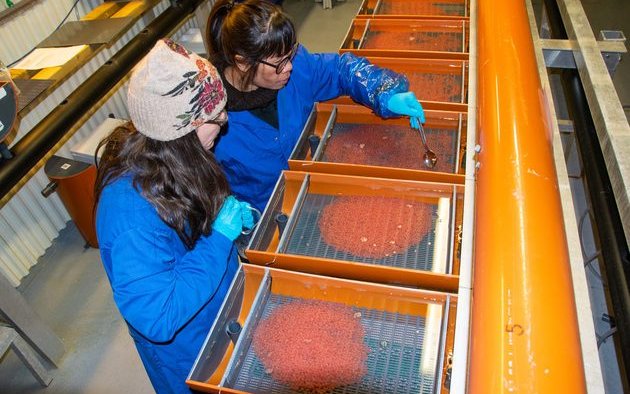Feed is the largest operational cost in salmon farming, counting for more than half the cost and 85% of the carbon footprint. Nofima researchers found that by genetically selecting salmon that require less feed, the feed conversion ratio may be improved by 10%, saving NOK 1.5-2 billion (USD 166-222 million) per year and a decrease of the carbon footprint of 7%.
Fish intake is hard to measure but with machine learning and deep learning algorithms, it’s now easier. “Colleagues have successfully produced extruded feed with radio-opaque markers, and they have live-x-rayed thousands of salmon from our partner Mowi’s breeding nucleus,” said Gareth Difford, scientist in breeding and genetics at Nofima. “I’m very proud to say that for the first time we have produced reliable genomic breeding values for feed intake in Atlantic salmon.”
With this new technique, researchers calculated what would happen if fish that grow well but require less feed were selected. After three generations, a conservative estimate is that the feed conversion ratio can be improved by 10%.
Trials were performed in land-based facilities with freshwater parr up to seawater post-smolt and Nofima researchers will seek opportunities to do trails in the sea.
The study was performed within the projects PrecisionVision, NewTechAqua and AquaImpact, and has been financed by the EU program Horizon 2020.

X-ray with radio-opaque beads (like stars) in the stomach of a salmon. Photo credits: ©Nofima.













